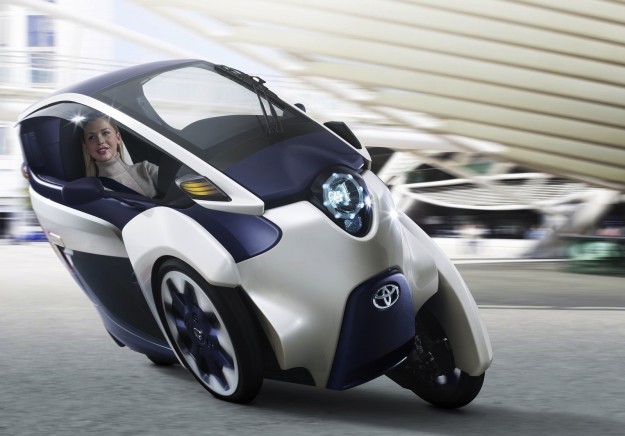Toyota has unveiled its Smart Mobility City display at the Tokyo motor show, providing a glimpse into the brand’s future plans for connected mobility and safety.
Designed to showcase the key areas Toyota believes are essential to the development of its Smart Mobility future, the display focuses on next-generation urban traffic systems, cooperative intelligent transport systems and next-generation telematics.
Headlined by the two-seat T·COM, upright-ridden Winglet (pictured bottom) and three-wheel Toyota i-Road, which debuted in Geneva and has since been confirmed for production, the Japanese manufacturer’s plan for next-generation urban traffic systems revolves around its Ha:mo transport concept.
Trialled in Japan since last year, Ha:mo is aimed at providing flexible transportation through the combination of personal mobility vehicles and public transport.

The i-Road will be introduced for Ha:mo from early 2014 with the T·COM to take part in the trial from mid December.
Comprising automated driving and driver support technologies that allow vehicles to communicate with infrastructure, pedestrians and other vehicles, Toyota’s cooperative intelligent transport system aims to eliminate traffic injuries and fatalities.
For this key area, the display includes a vehicle-to-infrastructure cooperative driving simulator.
Created to demonstrate environmentally friendly driving support systems, the simulator shows how road-to-vehicle, vehicle-to-vehicle and pedestrian-to-vehicle communication can be used to reduce the risk of traffic accidents.
Intelligent driver-support systems such as cooperative-adaptive cruise control – which uses vehicle-to-vehicle communication to adapt to other vehicles – and lane trace control – which employs sensors to detect lane lines and automatically steers the vehicle to maintain lane position – will also be demonstrated.

Next-generation telematics complete the Smart Mobility City display and include a traffic information gathering system, voice recognition software and a new smartphone-based navigation service.
The “Big Data” system collects large-scale driving data, including vehicle position and speed, which can be used by governments and businesses to improve traffic flow, map information and disaster response measures.
A cloud-based voice-operated service that enables users to search for and set destinations “in an intuitive manner”, the “voice recognition agent” is to be further developed by Toyota to recommend services based on behavioural predictions and driver preference history.
A new smartphone-based navigation service that provides “total travel support” – be it in-car or on foot – Smart G-Book incorporates the voice recognition agent software and Toyota’s T-Probe real-time traffic information service to adjust route guidance based on traffic congestion.
Toyota’s Smart Mobility City will be on display at the Tokyo motor show until December 1.





